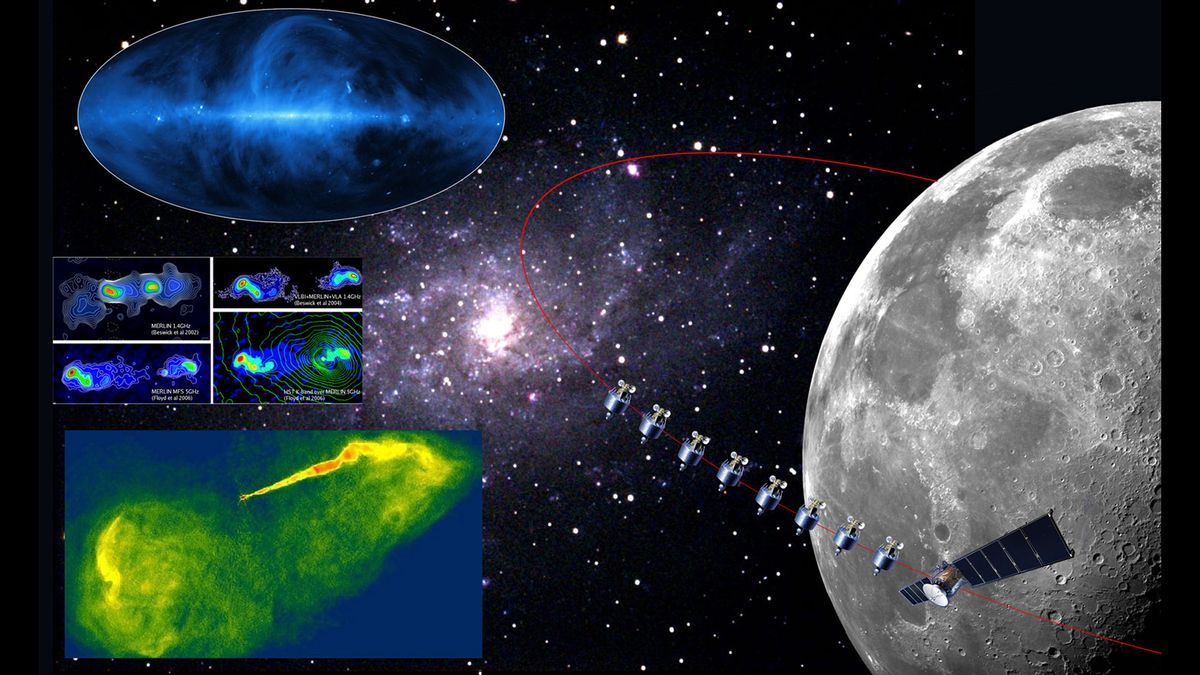China wants to launch a moon-orbiting telescope array as soon as 2026
By Tereza Pultarova published 2 days ago
The satellite constellation circlng the moon would enable scientists to peer into the universe's early days.

China's planned moon-orbiting telescope, the Discovering Sky at the Longest Wavelength Project.
An array of moon-orbiting satellites could enable astronomers to peer into the dark ages of the universe. (Image credit: NAOC/Xulei Chen)
China wants to put a small constellation of satellites in orbit around the moon to create a radio telescope that would open a "new window" into the universe.
The array would consist of one "mother" satellite and eight mini "daughter" craft. The mother would process data and communicate with Earth, and the daughters would detect radio signals from the farthest reaches of the cosmos, Xuelei Chen, an astronomer at the China National Space Administration (CNSA), said at the Astronomy From the Moon conference held earlier this year in London.
Putting such an array in orbit around the moon would be technically more feasible than building a telescope directly on the lunar surface, a venture that NASA and other space agencies are currently considering as one of the next big steps in astronomy.
"There are a number of advantages in doing this in orbit instead of on the surface because it's engineeringly much simpler," Chen said during the conference. "There is no need for landing and a deployment, and also because the lunar orbital period is two hours, we can use solar power, which is much simpler than doing it on the lunar surface, which, if you want to observe during the lunar night, then you have to provide the energy for almost 14 days."
More:
https://www.space.com/china-moon-orbiting-radio-telescope-2026?utm_source=notification
